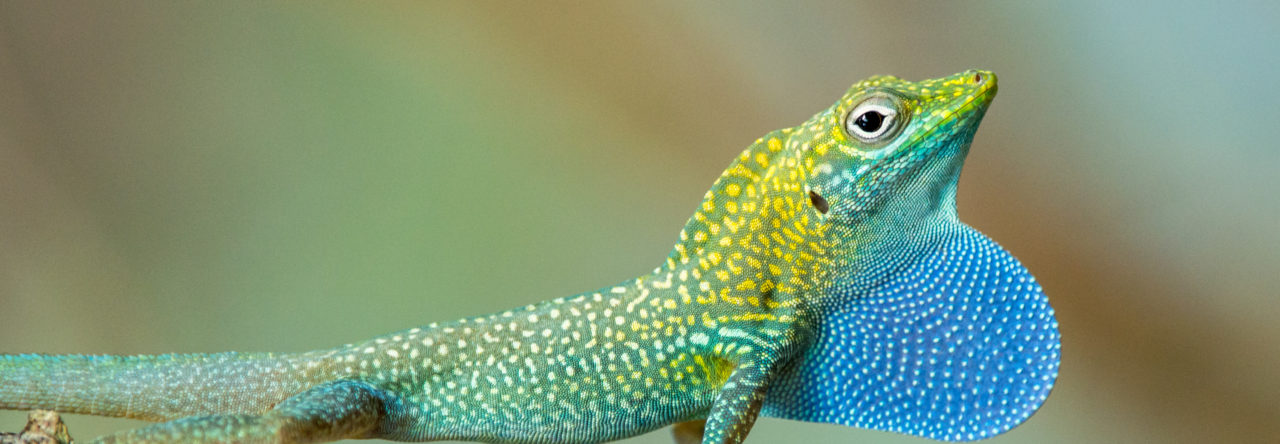
Anolis lineatus. Photo by Jonathan Losos
Matt Brandley recently posted on the remarkable anole of Curaçao, Anolis lineatus, which is notable for having a dewlap that is different on its two sides. Taking advantage of an invitation to participate in a conference in Aruba in January (the travails of life as a scientist), I’ve come to Curaçao to check up on this lizard, which I’ve never previously seen. The dewlap situation sounds remarkable, but there’s a second reason this species is of interest.
Many islands in the Lesser Antilles are home to only one anole species, and the anoles on these islands are renowned for the extent of their convergent evolution to each other and to trunk-crown anoles of the Greater Antilles. Schoener was the first to show that one-species island anoles tend to be remarkably similar in body size, a pattern reaffirmed most recently by Poe et al. The convergence extends beyond size, however, as these species also are very similar in their habitat use (similar to trunk-crown anoles in being arboreal but using a wide range of microhabitats) and their body proportions, such as the length of their limbs and the size of their toepads.
That leads to the question: is this a phenomenon solely of the Lesser Antilles and the two anole lineages that occur there (the bimaculatus Group anoles in the northern half of the island chain and the roquet Group in the south)? Or do solitary anoles anywhere converge on this pattern? Anolis lineatus is a particularly good test, because it comes from a lineage (the chrysolepis species group, about which we will hear more soon) that is not only distantly related to the other two, but is composed of anoles whose habitat and morphology are nothing like those of the solitary anoles.
So, I’m aiming to not only take a peek at lineatus’s throat fan, but also collect data on where it occurs and what it’s morphology looks like. First indications are that lineatus is a chunky anole, not unlike some solitary anoles such as marmoratus or oculatus, but perhaps more similar to trunk-ground anoles than to trunk-crowns.
Habitat-wise, though, lineatus is clearly a surprise—it’s not very arboreal, at least in my day and a fraction of data collection. It’s usually pretty low to the ground, rarely over 1.5 meters high, and often on large rocks or rock walls. More like a trunk-ground anole than a trunk-crown. Moreover, though I’ve been looking for it in the vicinity of human habitations, I’ve yet to see it on a building wall. Bottom line: it’s just not that arboreal.
To be honest, the anole that immediately comes to mind is Anolis gingivinus. This species is a bit hard to categorize: it occurs on some Lesser Antillean islands by itself, but on others it is sympatric with a second species (A. pogus). Moreover, on all islands, it tends to be found relatively low to the ground and not surprisingly, morphologically it’s more trunk-ground-like than typical solitary anoles. Of course, I haven’t actually seen gingivinus in nearly 20 years, so my memory may be faulty.
And we shouldn’t forget the Malice of Nature, which leads me expect to open my door tomorrow and see an anole on the ground, which immediately runs up the wall and out of sight.
By the way, there are other cool lizards here. Lots of green iguanas, for example, but also the very cool and herbivorous Cnemidophorus murinus, endemic to Curaçao and nearby Bonaire.

Cnemidophorus murinus. Photo by Jonathan Losos

















